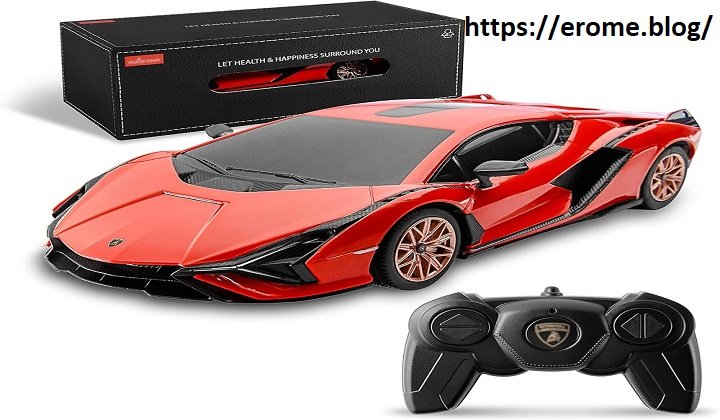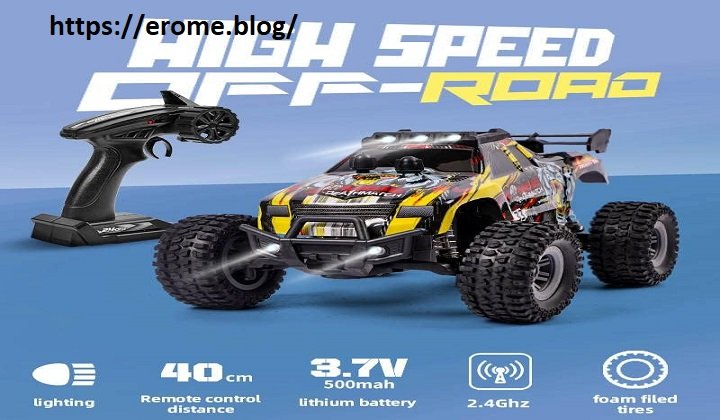Introduction
RC cars have fascinated hobbyists since their debut. People love their fun, precise handling, and endless customization options. Whether you are a seasoned racer or a first-time racer, it’s vital to know about the different car models and parts. You must also know how to care for your car from day one. In this complete RC car guide, we will delve into all things remote-control cars.
Types of RC Cars
Nitro-Powered RC Cars
For diehard fans, nothing quite rivals the experience of piloting a very fast radio-controlled vehicle that is powered by nitro gas every time you stick the throttle. Nitro fuel, as it is known for short, is simply a blend of methanol, nitromethane, and oil they run on. RC Nitro engines offer the most realistic racing experience you can get with a combustion engine that operates like its full-size counterpart! Nitro-powered cars are, therefore, great for short-term use. But, unlike the entry-level models, they also have high speeds and longer run times. But these all bring some difficulties like regular maintenance, fuel costs, and the need to tune the engine for best performance.
Electric RC Cars
Electric RC vehicles have taken an extremely awesome way with all the power. They are much quieter, need little maintenance, and are far simpler to control than nitro-powered vehicles. Electric cars use battery packs, usually lithium polymer or nickel metal hydride. They accelerate and handle extremely well. Unlike nitro cars, they are easy to refuel.
Motor Configurations
You will find electric cars with both brushed motors and brushless motors. Brushed motors are cheaper and easier to replace. Brushless motors are more efficient but costlier. They last longer and can go faster.
Hybrid RC Cars
Hybrid RC cars, as the name suggests, are a mix of both nitro and electric models. These on-road cars strive to combine the high-speed performance of nitro engines with electric power’s ultra-low maintenance. This is far less common, but hybrid cars are inciting interest with modders looking to retain their originality.
Components of RC cars
Chassis
The suspension is the skeleton of any RC car, holding everything together. Some common chassis materials are plastic, aluminum, and carbon fiber. The choice of each material has an impact on the car’s weight, strength, and flexibility. For high speeds and nimbleness, a carbon fiber monocoque chassis is used, while an aluminum frame caters to the needs of off-roading.
Drivetrain
This is where things get tricky, as the drivetrain decides how power goes to what wheels. The majority of RC cars will either be 2WD (two-wheel drive) or 4WD (four-wheel drive).
- Enthusiasts can go with a 2WD car, which is usually quicker and lighter, perfect for on-road performance.
- With their superior traction, 4WD vehicles are ideal for off-road racing.
Gears, axles, and differentials are other key drivetrain components that have a direct impact on the vehicle’s performance, depending on the terrain and racing style.
Radio Control System
About Radio Control System: The radio control system is a core part of the RC car and is primarily composed of a transmitter and receiver.
- Transmitters are what users use to control the car remotely; they send signals to the car’s receiver.
- The signals received by the receivers are what get translated into movement commands for the vehicle.
Transmitters vary, the simplest being just two channels and some having multiple channels for legitimate racing.
Accessories for RC cars
A lot of accessories can increase the performance as well as the aesthetics of your RC car. Add on some high-performance tires, suspension, and a body kit, and your GTI is set. Add-ons such as LED lights, spoilers, or wheels are available for personalization, and upgrades like a tuned exhaust pipe or a high-torque servo can help the car perform its best. Racing and competition.
Racing and Competition

Off-Road Courses
Among the many sub-genres of racing, off-road RC car racing in one where cars rip through rougher terrains such as dirt tracks, gravel and grass. This is because off-road courses test out a car’s suspension and grip, meaning vehicles must have high ground clearance and robust 4WD combinations.
On-Road Circuits
Most of the tracks are on-road circuits made out of tarmac and cater to high-speed racing. All are tracks that require low-slung, ultra-grippy shod tires & 2-wheel-drive powertrains to the point they can be a day of work component.
Street Racing
Street racing is often an option for some RC enthusiasts and occurs on city streets or parking lots. Tires and chassis setup play a major role in street racing, as you’ll need to navigate areas with tight turns and smooth pavement.
Competitions
RC racing competitions are held on a global level, from small local club racing to international professional events. These events push the drivers’ skills and car setup, requiring the driver to adapt quickly. The popular RC Racing leagues for electric or nitro cars lead many RC racing regulations, such as off-road and on-road championships.
Customization of RC cars
Body Shells
The design of an RC car body shell is fully customizable thanks to the many options available concerning body shape and material used. You can choose body shells to lay down dirt, burn up asphalt, or tear through the streets. The different body designs affect aerodynamics, which in turn affects speed and stability.
Aerodynamic Designs
The racing-style aerodynamic body designs ensure less air resistance while improving acceleration for most racing enthusiasts. For high-speed tracks, aerodynamic tweaks such as spoilers and skirts help provide more downforce and handling.
Custom Painting
Painting can be one of life’s great joys, and within the context of perfecting the appearance of your RC vehicle, custom painting ranks right up there with choosing the proper wheels. If you in particular would enjoy a livery to make your car stand out or simply prefer some unique design, then painting the body shell lets you display who you are and what taste you have.
Performance Tuning
For people who want as much speed and control from their RC cars, performance tuning is a must.
Engine Modifications
In the analysis of nitro RC cars, altering the engine with simple updates like an aftermarket carburetor or a waste pipe can give you a very dramatic power improvement.
Gear Ratio Adjustments
The mechanics modify the gear ratio in three stages to prepare a car for the race conditions. A higher gear ratio offers better acceleration for short courses, while a lower gear ratio provides more speed for longer tracks.
Maintenance and Repair

Cleaning and Lubrication
With the aid of this proper maintenance, the body of your RC car will remain in new, top condition. It reduces friction and provides a longer life for the car. It clears dirt during normal chassis cleaning.
Troubleshooting
Every RC car owner should know how to solve typical problems. Electrical issues like shorts or battery troubles, as well as worn-out mechanical components such as gears and suspension parts.
Hobby Culture
Online Communities
There is a great community behind the RC car hobby. It also has some online forums and social media where hobbyists can bond together while sharing tips, new products, or troubleshooting.
Retail Stores
There are countless RC car retail stores out there, both in physical locations and online, so you’ll have no trouble finding cars as well as parts and accessories. Specialty shops may have employees who can repair phones and provide upgrades, too, but even rare parts for international models or out-of-production devices can be easily found in the marketplaces used by eBay and Amazon.
FAQ?
What does RC car stand for?
An RC car (radio-controlled car or remote-controlled car) is a scale model vehicle that is either controlled using a radio transmitter or other wireless methods.
What is the RC car?
You can control an RC vehicle, a small car, from a distance using your garage door’s maneuvering capabilities. The controller emits signals to a receiver that is inside the car, which enables the user to steer, accelerate, brake, and perform telemanoeuvers. Electric, nitro-powered, and hybrid RC cars are on the market as well, which have different performance profiles for road running or off-road targeting.
What is the full name of RC cars?
The term RC cars refers to radio-controlled cars, which operate by receiving signals from a handheld radio transmitter (controller) that sends data to a receiver inside the vehicle.
What company is the brand of RC cars that is most commonly used?
Traxxas, one of the most recognizable names in RC cars, manufactures high-performance remote control vehicles that are either meant for racing or for everyday hobbyists. Some of the other top brands you may have heard of are Tamiya, HPI Racing, and Arrma.
Conclusion
A fun pastime that many enjoy is racing RC cars. Nitro engines might give you the raw power you crave. Or, you might prefer the electric models and their endless customization options. This guide offers you the necessary understanding of vehicle ranges, performance tuning, and other modifications, plus race tips for varying terrains to successfully enter the world of RC cars. Doing proper maintenance, caring for issues, and having fun with the RC enthusiasts out there can take your skills to another level—not to mention the amount of fun you will be able to have in this hobby. With RC cars, the sky is the limit, and bang for buck, it offers arguably better excitement than anything else.
